Key post 1 – Grouped(fine art groups of four) work for Field
Month: March 2016
Projections for field
final workings for the final pieces field individual.
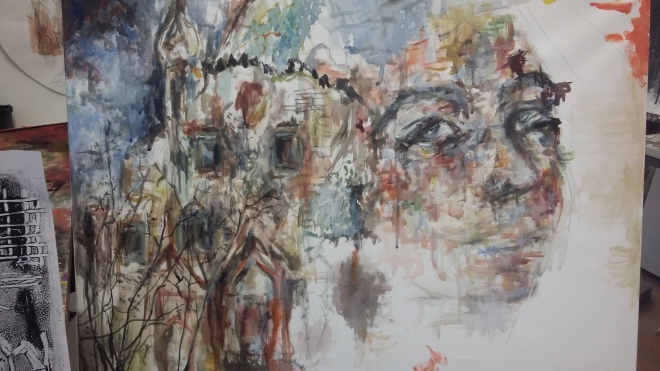

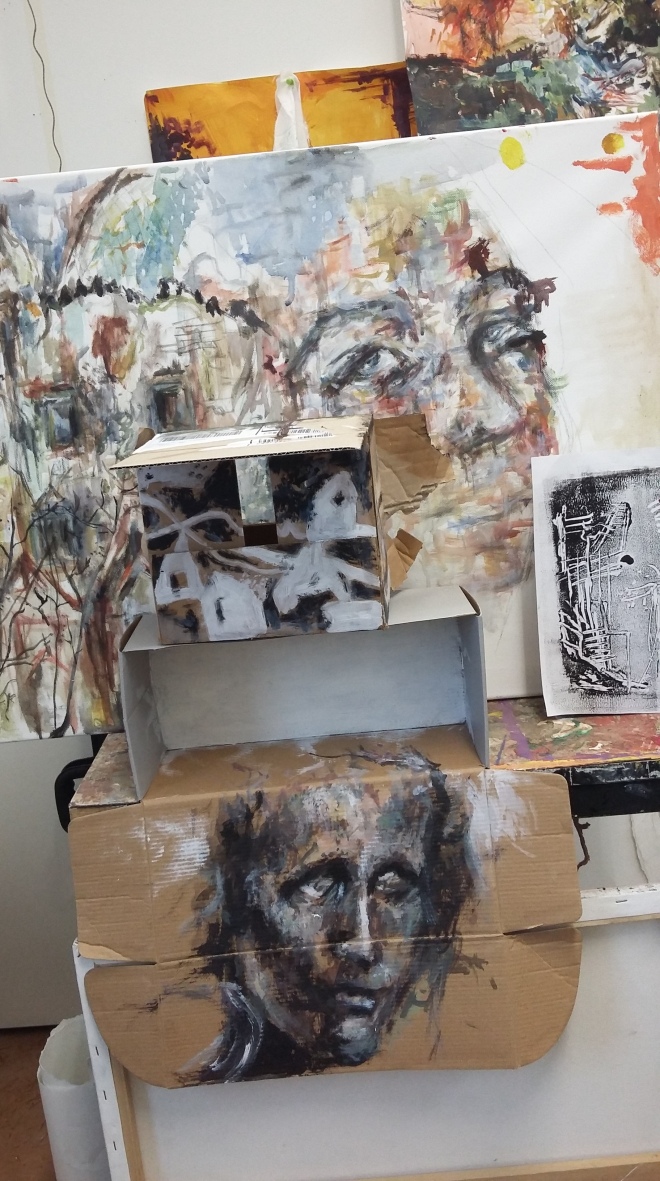
This shows the boxes that have been inspired from the interdisciplinary field group four weeks ago. By stacking the boxes, we can relate with how homeless’ lives are normally very temporary like cardboard, however are really helpful for storing essential living objects.
The port
The boxes also make the presentation seem messy and a bit like a shanty town like we see in poverty villages: 
I have been boxing the boxes on top of one another to make it seem like a shanty town city. With the canvas behind it acting as a scene as if being placed in a theatre or installation for an exhibition.
The print box in the middle I have painted of one of my prints. I wanted to see if I could replicate paint in the same way as printing ink would. I thought this one was the most successful one so that is why I used it for the box.
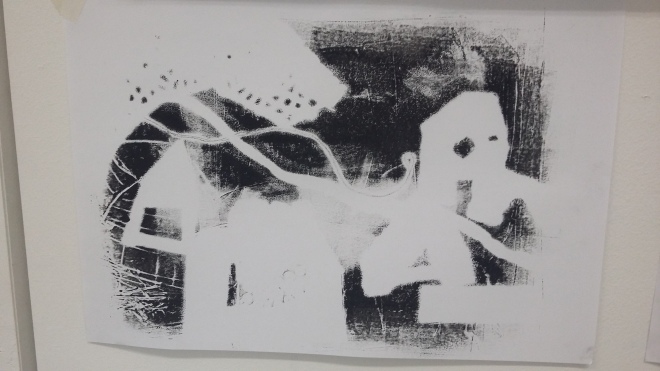
Collaging my prints for field work individual
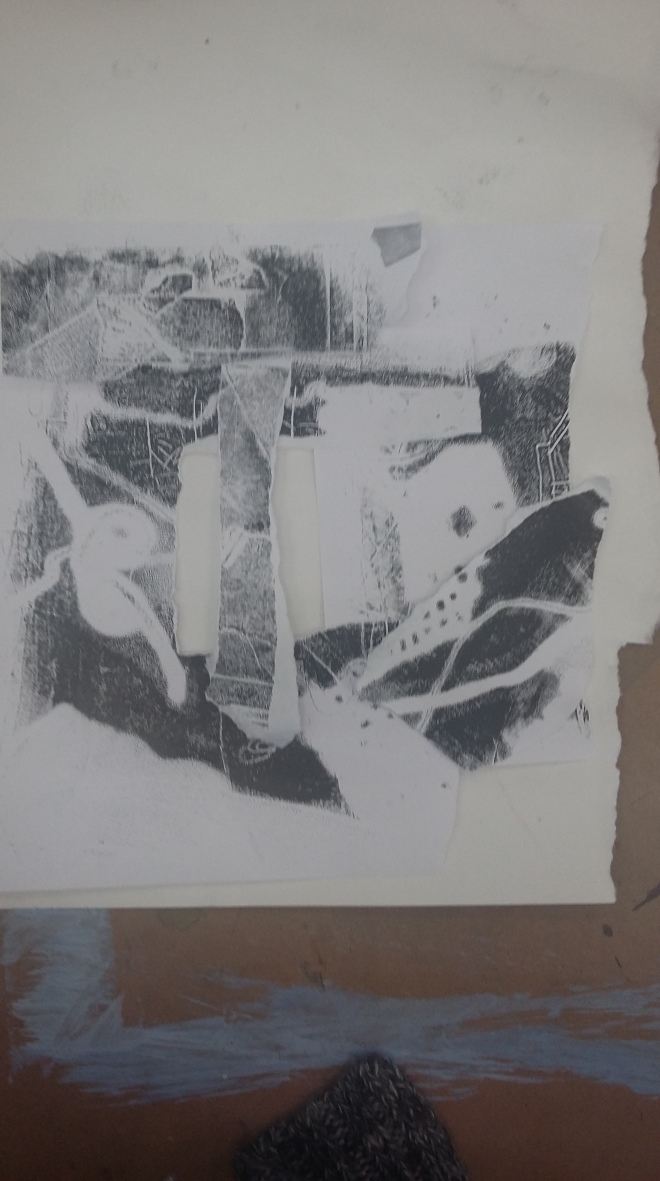
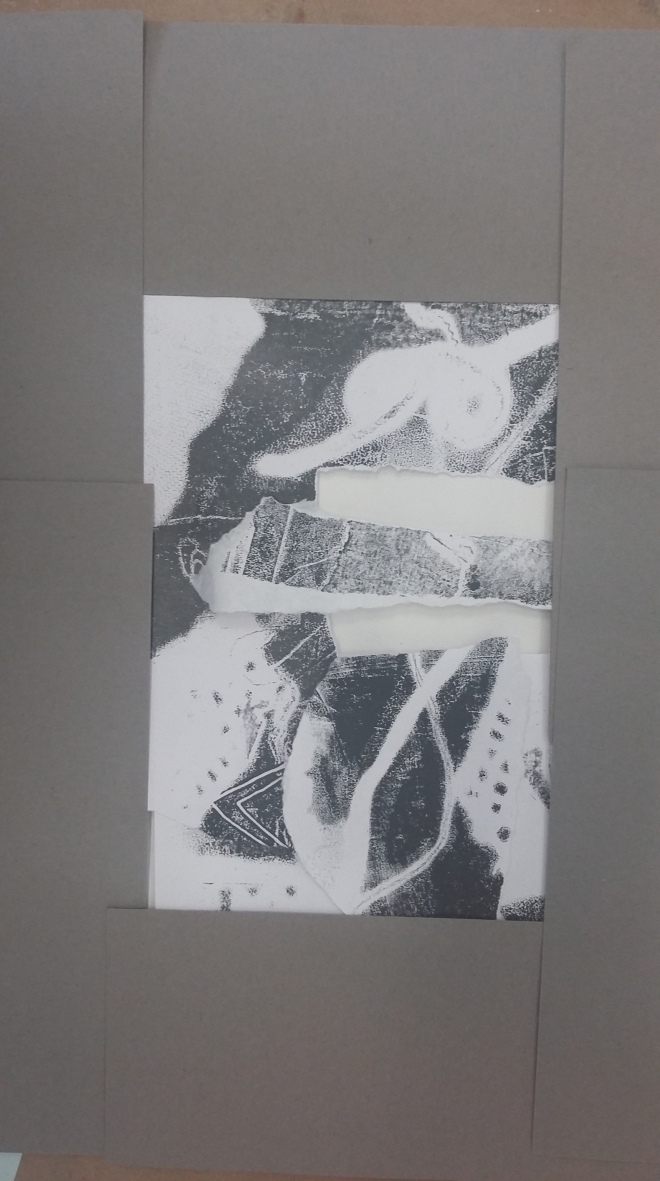
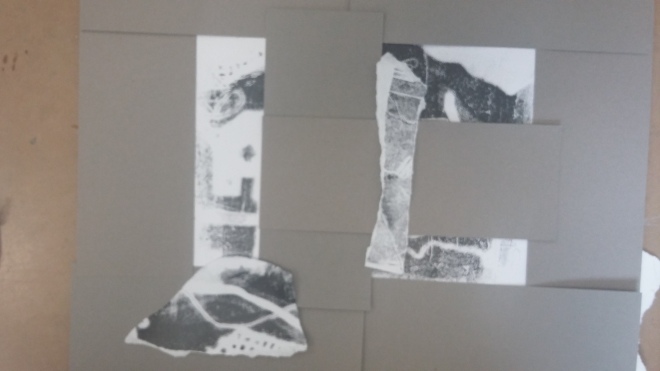


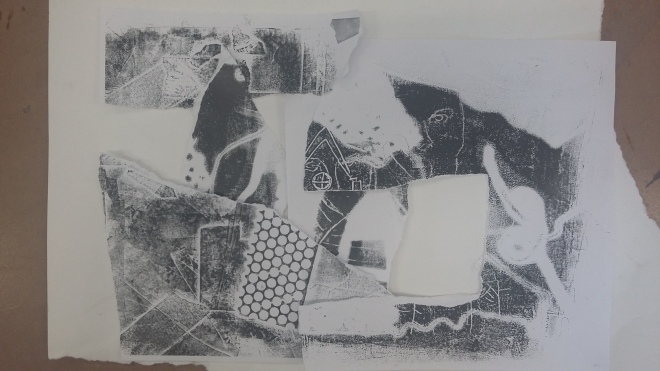
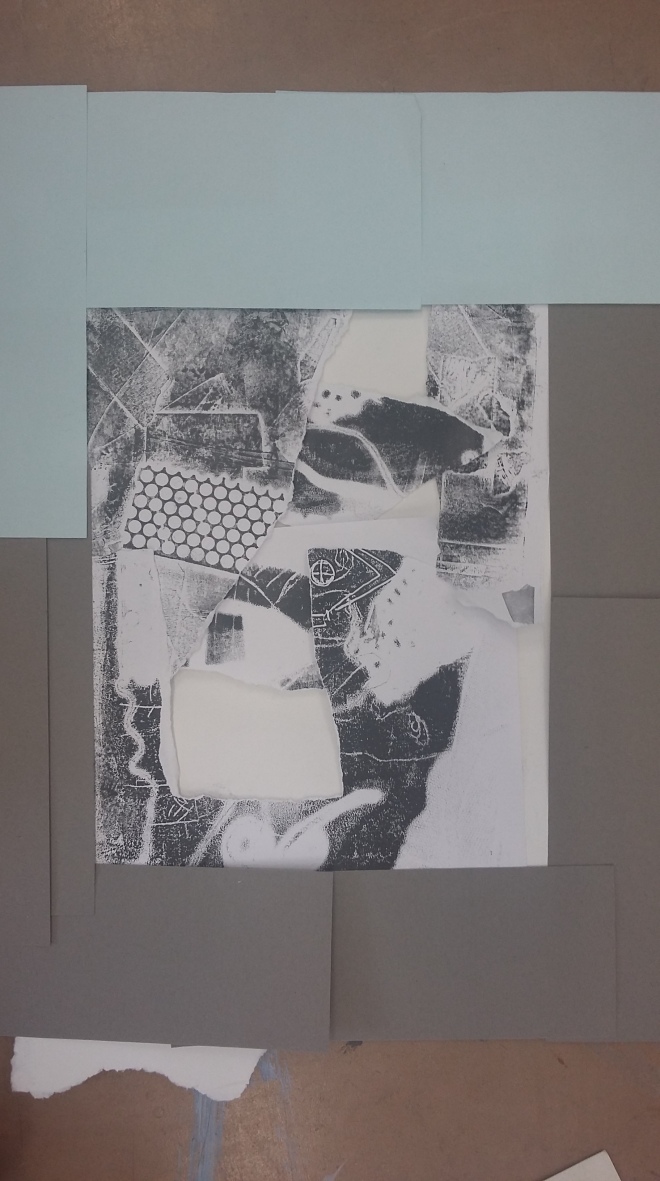
Prints with cutting out and rearranging
Pushing forward the prints, trying to create new compositions.
Rearranging the prints to develop a final piece

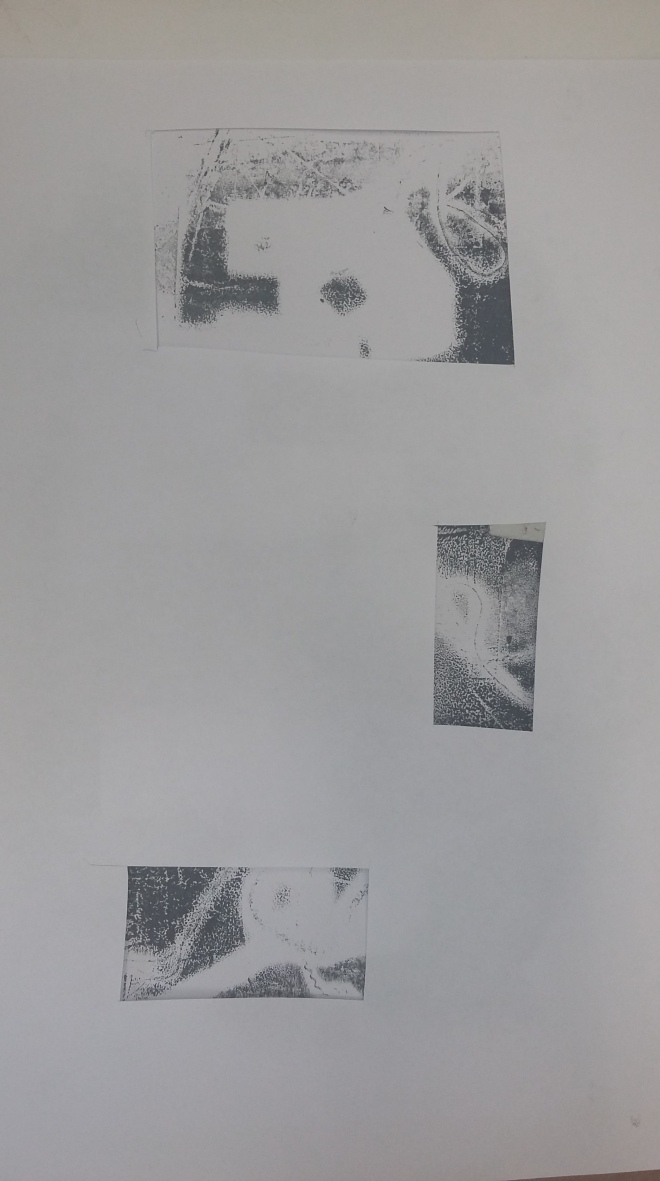
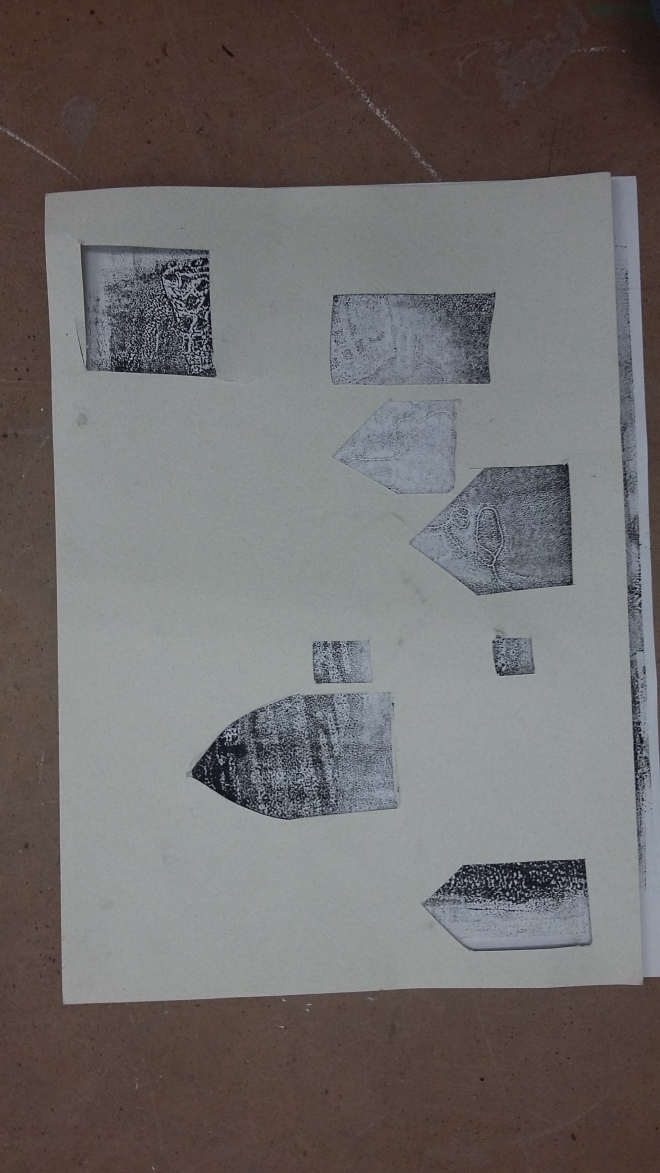
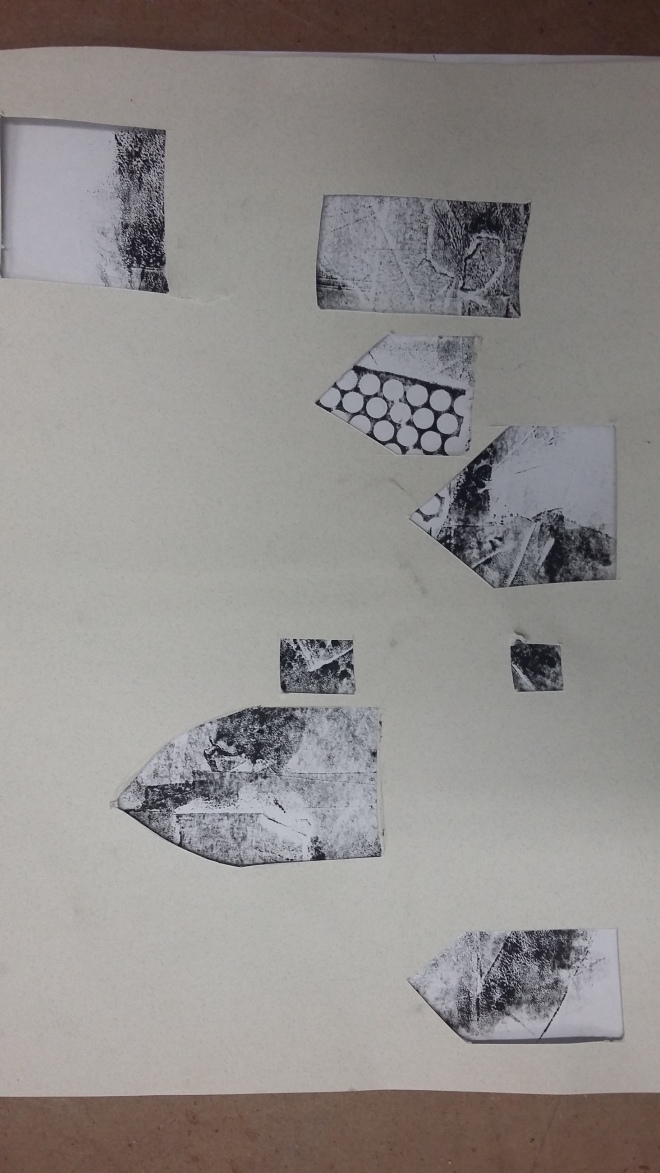
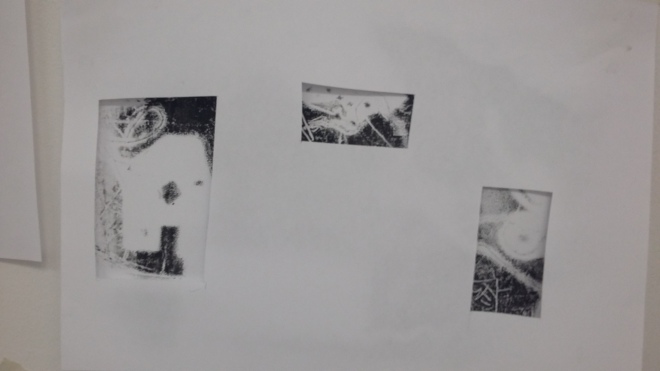
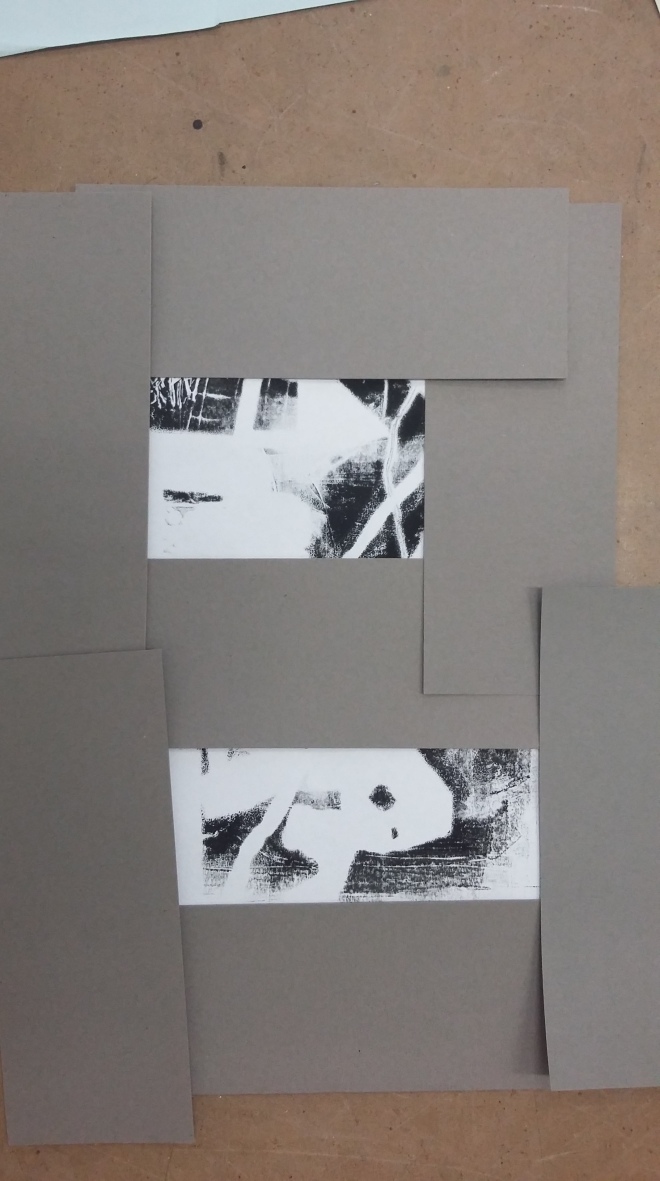
A bit like a homeless person’s life – They are always open to be watched and surveyed on cameras around cities and towns, however – a lot of people tend to ignore how open their lives are. I see this on the streets of Cardiff and also other places in the UK such as Brighton and London. It can be considered ironic the fact we go into out own private homes, to then watch and observe upper class or famous people on their social media; Could we say that social media is a form of surveillance? – though it is more controlled.
For example, on Twitter you can post where your current location is when you wrote that specific tweet.
Adding the paper over it with the windows can be related to a homeless person’s life: it is disorganised and not rigid – the cut out windows are placed randomly.
I am thinking about using these prints in my final work.
Work/prints for field, own work
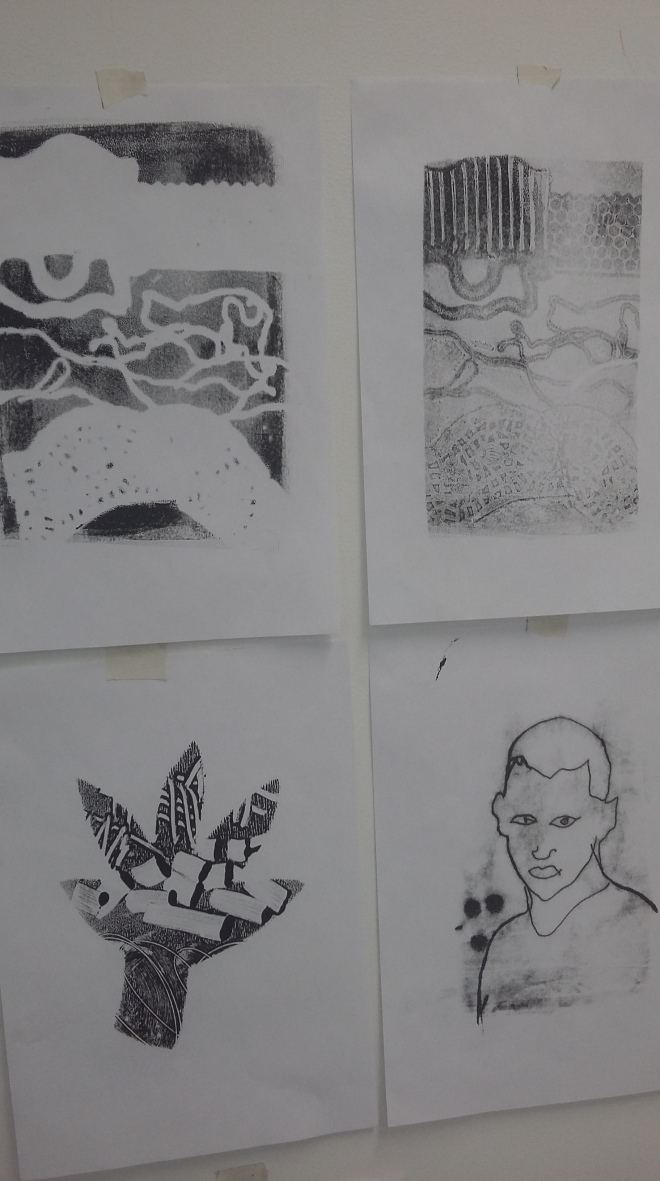
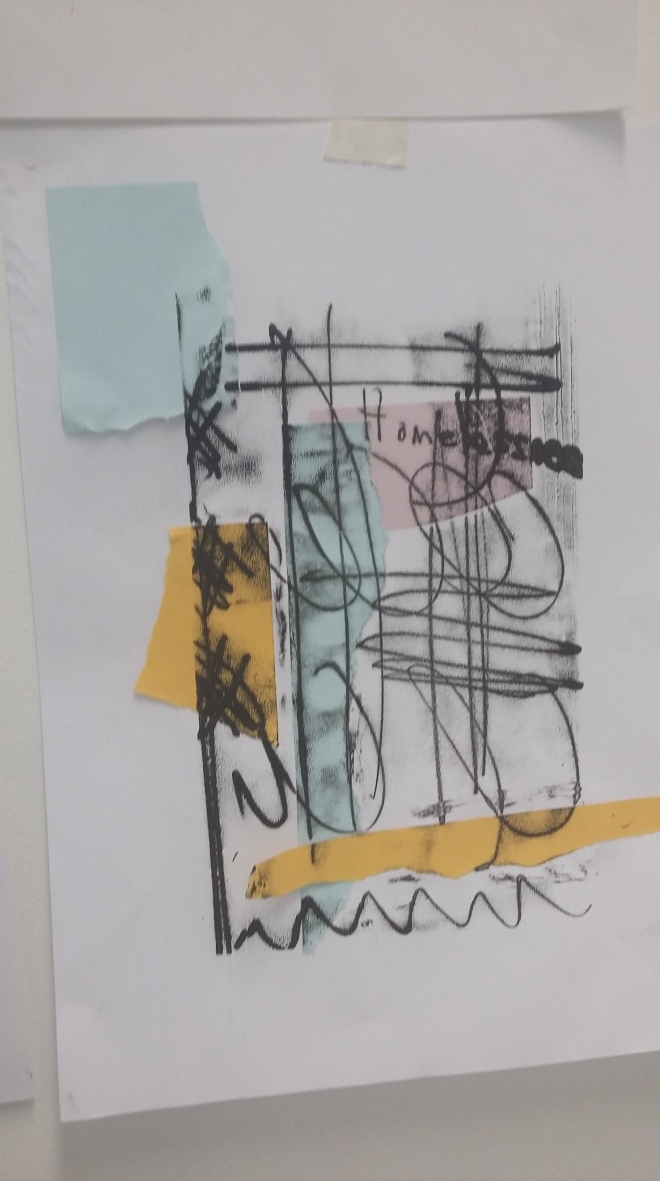
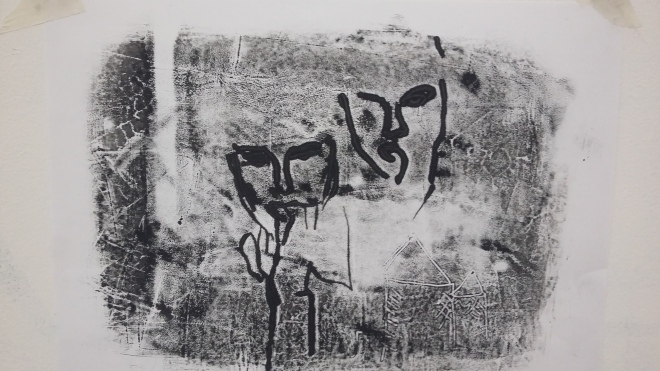

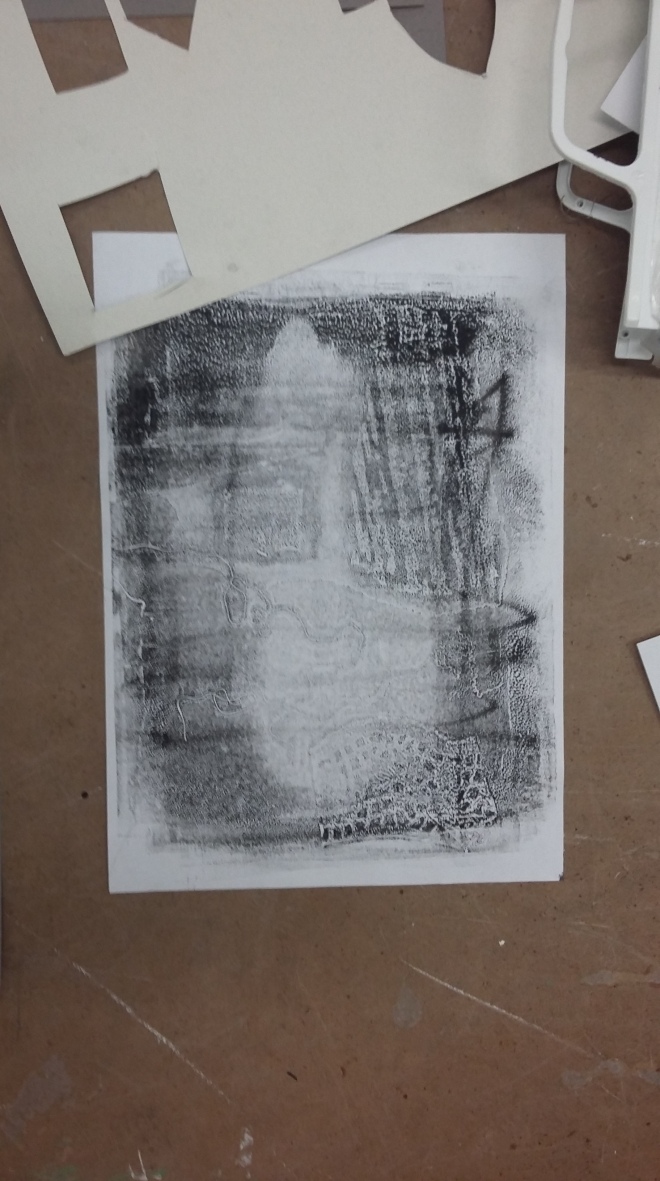
Activity after the interdisciplinary groups


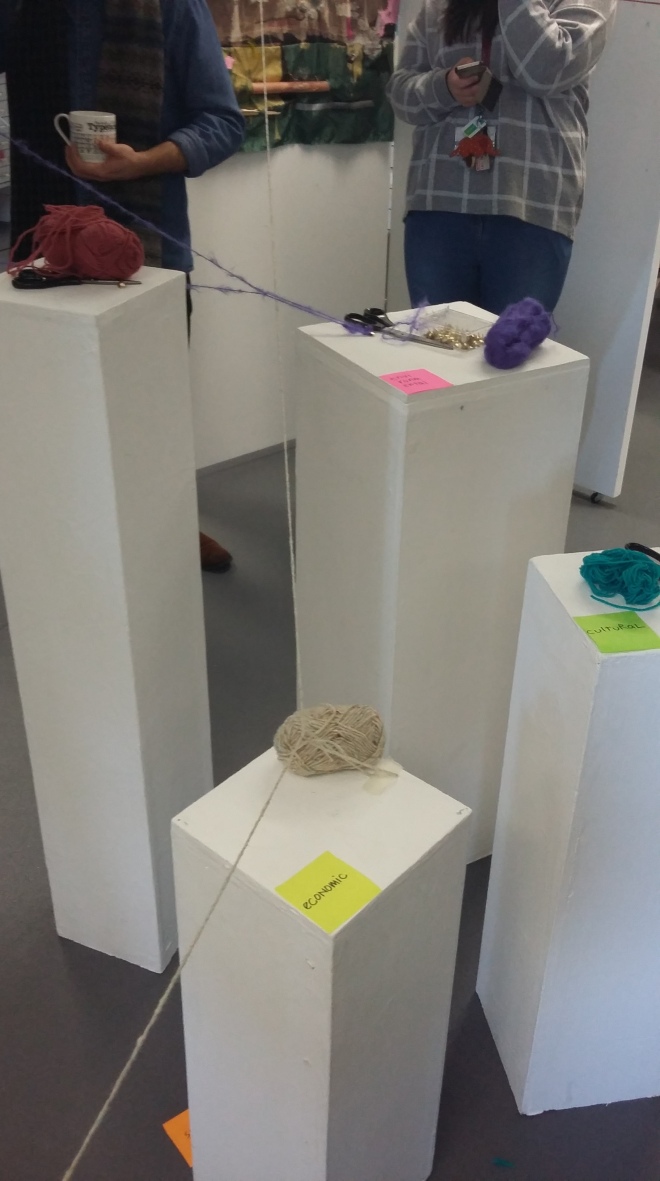
 Here are some images that I took after we presented our visual presentation of our city.
Here are some images that I took after we presented our visual presentation of our city.
This activity helped me develop thoughts and raised awareness about the world around me about how factors such as social, economic and culture can change everything within a city or country/world for the future.
We used different coloured pieces of wool that represented a pillar – the pillars being Economical, social, environmental and cultural. First, as a big group we had to discuss what hierarchy each of the words would be in for a utopian city/world. There were difficulties trying to put each factor in a place because we felt they were all equal. For example: without money (economic) there would be no money to maintain the city, and without any people (social) there would be no point in having a city.
We then made links between each city the class made (so there were five other groups so there were 6 visual representations of cities).For example, the was one city which also had water as it’s main part of their city, so we linked that with our city because of how the lake was so important to our city.
It was helpful and inspiring to see the other group’s work and how they managed to collaborate their ideas together. For example, one group used clay in their material and inserted a pole through the material which made it 3D and more interesting than a flat object.
However, I found working in larger groups and being around a lot of people at once sometimes intimidating and irritating. I think this is because I am used to working alone and like my independence when making art and trying to explain it was uncomfortable for me.
This challenge helped ideas for exhibiting for the future.
The wool/coloured string makes it feel like an installation piece for an art gallery or public arts to raise awareness.
Key post – field ideas continued
The idea of surveillance was brought to my concern from the interdisciplinary field groups about invisible cities (previous posts).
Before, I was looking at the decay of buildings and efficiency of land –
Now I can use the aspect around surveillance issues, and decaying buildings in which I thought about the homeless (people living on streets, poverty).
from 2nd March 2016
- installation
- boxes to represent shelters and open privacy
- boxes to represent what homeless people have
- use drapes of cloth to represent the blanket over the figures head
- a blanket to represent the hidden, the needing for warmth and shelter
Interdisciplinary groups for field: Cities and Eyes
The work above shows the variety of photos of our final idea for the piece we had to present for the next week. We worked together well, and came up with a few ideas and discussions.
We decided as a group to put holes/cut the top centres of the boxes out to convey the city being so open and their ‘surveillance’ was too overpowering and too controlled. – The idea that everyone was being watched through their homes (which has actually come from safety CCTV) – which can also be seen in the present from hacking phones and text messages which is a recent news story of leaked explicit and private images.
Therefore, the holes going through the buildings were to show how transparent a wall or a private home is.
After the first part of constructing the cardboard boxes together (I found this a bit challenging as I am not used to working with 3D and materials and found the cardboard hard to control/manipulate), one of our team members had an idea of using paper mache (PVA glue with water mixed and tissue paper) to cover the buildings so they were more sturdy to put up when it came to presenting. This took another day to do, and had to leave to dry afterwards. Over the weekend, a group member came in and stuck all the buildings onto a big piece of card. Finally, the board and the buildings were ready to spray paint.
We wanted to use white paint to cover the buildings, however there was none in the shops at the time period we had to finish in or in our price range ( which could be seen as a problem for this task because it was only 1 week long). We wanted white so the projection would show on the buildings.
Alternatively, we decided that silver spray paint would be a good choice for our structure due to how mirrored the city is. The spray paint was successful as it was quick and also was evenly spread/coloured.
kp – Captivity (Field)
So during the interdisciplinary groups for field, our theme we decided from the exercise about Invisible cities was around surveillance and how it would change for the future.
Our particular city was a dystopian at first, though this changed and was debated on about how the citizens of our city were actually so used to this non-privacy society that it would not affect what they did.
So my ideas continued to develop – which I thought about freedom and privacy. Such as captivity, no freedom (also freedom of speech lacking). This then continued to develop into prisoners due to their captivity and also the panopticon (in which I first learnt in Term 1 constellation). The panopticon is a device that was first used in a design of a prison cell- the guard would sit at the middle on top of a tall tower so all of the cells that would semi-circle the tower. The cells would be glass so the guards would be able to see the prisoners whenever they wished to. However, the prisoners could never tell when the guard was looking at them – which resulted in the prisoners always behaving so they could collect their rewards or luxuries (as an example). Therefore, the prisoners are always being watched. They have no privacy and also no freedom. However, they do have safety – though this can also be argued to due events in prisons we see fights and abusive mentally and physical behaviour in prisons. Such as Rudolph von Ripper’s “Defense of culture -and the walls alive” in 1938.











